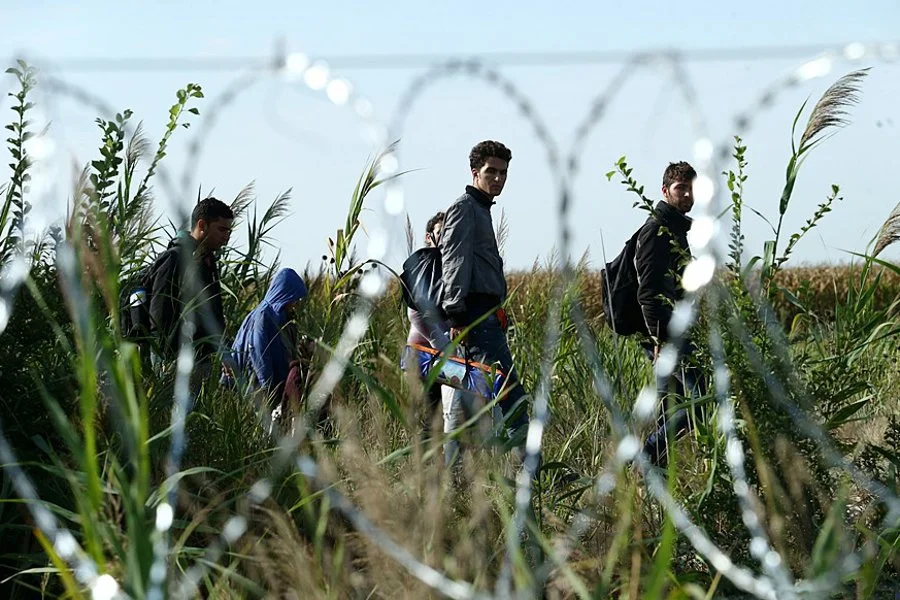To what extent is the elimination of modern slavery a feasible goal? Assessing the seeming futility of the current migrant regime.
In the undercurrents of modern society lies a dark secret. The crisis of modern slavery, in which people are forced to work and live under conditions considered brutal, abusive, and illegal per international human rights standards. The United Nations and the International Organization for Migration and International Labour Organization (ILO), amongst others, have worked hand in hand to compile research, and in a September report revealed that over 50 million people were living as modern slaves. This number was divided into “28 million in forced labour and 22 million in forced marriages,” and although not limited to any specific region, culture, or religion, estimates have shown that women and children have been most disproportionately unprotected and vulnerable to it.
But there is another group of people who are often overlooked. Without legal protections and vulnerable to many types of labour exploitation, migrant workers are those estimated to be amongst those most vulnerable to modern slavery, with their chances of being held in situations of forced labour tripled that of native born workers. Migrant workers, especially those who cross borders on irregular routes (and whose unlawful means of entry often denies them a chance for sufficient legal protection) are especially vulnerable in their plight to a foreign country. In order to safeguard their arrival in their new home, irregular migrants are often forced to rely on illicit methods of transport, like smugglers and traffickers, which can effectively render them victim to a profitability scheme where they are willing to pay exorbitant amounts of money to get into a new country, no matter how inhumane the treatment may be. This cycle of people being held in varying degrees of captivity does not stop once they reach their final destination, though— modern slavery goes far beyond the borders.
Close to home is the example of Vietnamese migrants being trafficked into the United Kingdom. In a publicised report by Anti-Slavery International, the cases of job-seekers originating from South East Asia were involved in a variety of deals with ‘labour brokers,’ who can be understood as illicit traffickers. Testimony from a 15 year-old exposed how their captors threatened to call the police on them, holding their illegal status in the country as blackmail. In the United Kingdom, Vietnamese people continue to be some of the most likely victims of modern slave labour; already thousands in debt for having paid for the journey, they are made to suffer sexual abuse, debt bondage, and labour exploitation in silence to remain in the country.
But migrant slavery is by no means reserved to movement with Europe as the final destination. It is a worldwide phenomenon, so much so that it has “moved out to sea,” with a specific notable case of pervasive forced labour in Thai fishing fleets. Vessels in the South China Sea are crowded with thousands of Southeast Asian workers from Laos, Myanmar, and Cambodia who have been sold onto these illegal fishing ventures. They are faced with shockingly similar practices to the migrants heading towards Europe; with their passports being confiscated, being forced to work brutal hours in abusive environments, and handling threats about their legal status, the horrors of the desperate predicament migrant fishermen face goes on and on.
So what is there that can be done to eliminate this crisis once and for all? The most recent United Nations report doesn’t seem to be doing much more than yelling into the void and crossing their fingers for change to occur. The report advocates for states and NGOs to strengthen their protection of migrants, and delineates the necessity of having a multilateral engagement strategy to tackle this crisis, which would employ “trade unions, employers’ organizations, civil society, and ordinary people,” in addition to the work that governments must undertake. But beyond this call to action, there is no specific plan of action, timeline, nor list of named actors to be held accountable. International law, albeit present in its advocacy, seems to have faltered in its practical applicability.
This is not the first time international law has failed to solve the crisis: the case of migrant fishers in Thai fishing vessels provides a stark example of how regional institutions should not treat migrant workers. The Association of Southeast Asian Nations (ASEAN), currently has no accountability framework to protect these migrant fishers and prosecute those ring-leading such an illicit institution. Although there is an ASEAN regulation to “migrant workers,” those working on fishing vessels are, on a technicality, not protected by the anti-trafficking regulations of the regional union, as they are “migrant fishers” rather than “migrant workers.” Such a small change in diction could provide a stronger framework that would give ASEAN the reins to finally undertake formal mechanisms to protect maritime slaves. Without these proper accountability measures that would maintain useful and all-encompassing legal definitions for what constitutes an exploited migrant worker, the crisis in the South China Sea is not likely to disappear anytime soon.
We must not fault the United Nations report on what it is advocating for, but rather its lack of a specific methodology of approaching the monumental task ahead. As new research uncovered, in almost half of the countries there lacks sufficient protection for modern slavery, so the UN’s message that states must adopt guidelines to protect migrants, irregular or not, absolutely rings true. But even in countries where there is protection, there remains a plethora of incidents where migrants still end up held in slave conditions, leaving the road ahead murky. The convoluted way forward has led some to argue that development is the true key, and although it is understood that codified anti-slavery legislative provisions will not hurt prospects, the real solution lies in prioritising that migrant workers are being compensated sufficiently. By emphasising wage protection before the legal protection for migrants, some have stated that social justice is more obtainable, as although it would not change the global scale of irregular migration, by ensuring that specific companies pay workers rather than focusing on large scale and often unattainable policy shifts, the agency of those often most invisible in society could increase. This solution, however, would be nothing more than a band-aid on a bullet hole: calling on companies to pay their workers more does not fit in with the current system of migrant slavery, as the activity itself is predicated on the underpayment of people. In addition, simply calling for companies to raise wages wouldn’t factor in the complexities of regulating the informal sector, especially in underdeveloped countries without the financial capital to oversee labour operations.
Elimination of the global regime of modern slavery is not likely to occur anytime soon. Its startling presence in almost every country, the intractability of tracking and protecting migrants, and the unwillingness of states to reconcile with the dark truth occurring within their borders make the fight against it seem almost futile. We must not discount international law, yet rather push for it to work more effectively, so that the UN and its member states adopt formal mechanisms to regulate the introduction of universal provisions with strict measures for accountability as a central norm, so that the recommendations in this most recent report do not go unlistened to, and most importantly, so that exploited people around the globe will have a chance at liberation.
Image courtesy of Gémes Sándor via Wikimedia, ©2015, some rights reserved.
The views and opinions expressed in this article are those of the author and do not necessarily reflect those of the wider St. Andrews Foreign Affairs Review team.



